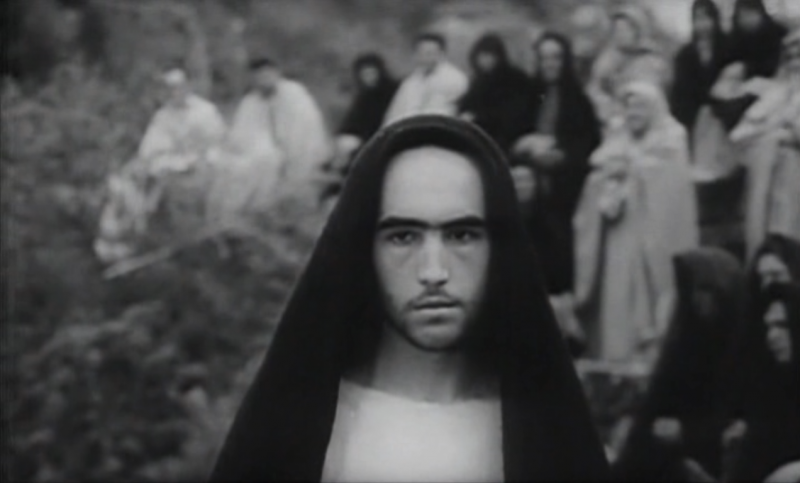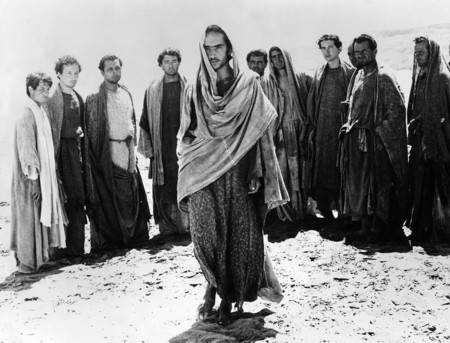Pasolini's The Gospel According to St. Matthew @ The Living Theatre
48 years have passed since the release of an Italian masterpiece: The Gospel According to Saint Matthew by Pier Paolo Pasolini, yet the film still inspires artists worldwide. This time it has been translated into a theater piece presented at the undergroundzero festival.
Created originally as an annual guest artist festival, undergroundzero is an annual festival of independent contemporary theater, dance and performance in repertory.
Artists are recruited to join the festival on an invitation only basis. The festival does not curate or select individual productions – the decision on what to make is the artist’s alone. In addition to the work of the resident artists, the festival presents the work of several local and international companies each year to encourage an ongoing exchange with the local community and to maintain a global perspective.
The undergroundzero festival was founded by Artistic Director Paul Bargetto and includes the following resident artists and companies: Anna Brenner, Conni’s Avant Garde Restaurant, East River Commedia, Hoi Polloi, Daniel Irizarry & Laura Butler Rivera, Shige Moriya & Ximena Garnica/Leimay, Doris Mirescu/Dangerous Ground, Performance Lab 115, Jill A Samuels, Shannon Sindelar, and The Living Theatre.
Bargetto recently directed the Living Theatre and the East River Commedia in a workshop on Pier Paolo Pasolini's The Gospel According to Saint Matthew.
The 1964 black and white film is “a strikingly unusual picturing of the story of Jesus, done with a cast of nonprofessionals on locations in southern Italy and directed by a man who was an acknowledged Marxist and atheist,” Bosley Crowther wrote for the New York Times in 1966. “The story of Jesus is told in the simple and naturalistic terms of a plain, humble man of the people conducting a spiritual salvation campaign in an environment and among a population that are rough, unadorned and real.
The Jesus we see is no transcendent evangelist in shining white robes, performing his ministrations and miracles in awesome spectacles. He is a young man of spare appearance, garbed in dingy, homespun cloaks, moving with quiet resolution across a rugged and dusty countryside, gathering his tough-faced disciples from toilers he meets along the way and preaching his words of exhortation to crowds of simple, sullen peasants and sprawling children.”
Pasolini reportedly chose Matthew's Gospel over the others because he had decided that "John was too mystical, Mark too vulgar, and Luke too sentimental.” The story is told from the Nativity through the Resurrection using dialogue that is mostly taken directly from the Gospel itself.
The press was allowed to speak to the director after a passionate and moving performance that was held at The Living Theatre. As of now this is a workshop “literally made without a budget - it is, in its current form, a statement in the spirit of the Arte Povera. We will be making a final draft in the coming months that will include a proper lighting design, and a deeper rehearsal process,” Bargetto declared.
How did you translate the film into the play?
We used the textual and visual dramaturgy of Pasolini's film as an entry point into exploring the text in English. While he did not add any language not used in the Bible, he did make some brilliant edits, and subtle rearrangements of the order of certain pieces of text that heighten the socio-political implications of the text. We also carefully studied the film and translated actions and scenes into stage directions that were the starting point for our own compositions.
What attracted you to the film?
First, I must admit that Pasolini is one of my very favorite artists. His films, novels, poems, and essays have been a very significant influence on my own work. I was attracted to the Gospel because it revealed to me a Christ that I had never seen before. Growing up in the United States as a secular agnostic, Christ was to me a figure of the conservative party, the god of the establishment. I understood him to be an icon of the right wing fundamentalist movement, hostile to the secular state, and to social welfare, against homosexuality and the arts, aligned with the rich, and deeply opposed to equal rights for women.
Therefore it was a big shock and surprise to find the Christ in Pasolini's gospel! Here is a revolutionary Christ, against the established order, on the side of the poor and downtrodden, healing the sick and feeding the hungry, and extremely opposed to wealth, and power - in short a revolutionary man of the left!
I was also deeply attracted to the stark simplicity of the film, its compositional beauty, brilliant music score, and uncannily brilliant use of non-actors in almost all the roles.
Why did you chose this specific film by Pasolini?
There are so many wonderful films to choose from, and I hope to stage them all some day! I had been thinking about making this piece for a number of years and had the good fortune to meet a young actor who is a member of the Living Theatre, Brad Burgess, who turned out to be an absolutely perfect Christ - in look and temperament. Once I had him involved in the project, the rest of the pieces fell into place.
Why now?
The Gospel is in the zeitgeist now, especially in New York with major Broadway revivals of Godspell and Jesus Christ, Superstar. More than that, I feel we are living in a time of profound moral upheaval born out of the breathtaking greed and selfishness of the financial crisis. Pasolini was a strident critic of the bourgeoisie, and of the power of consumerism and the market state, and the Christ in Matthew echoes many of these sentiments in a powerful way. It also exposes the profound contradictions of Christ as he is perceived in the United States, and of the people who use his name to justify behaviors and beliefs that are nowhere to be found in the Gospel. By keeping true to the text, and presenting this story in a simplicity inspired by Pasolini, we hope to reveal Christ as a new and familiar stranger.




































i-Italy
Facebook
Google+
This work may not be reproduced, in whole or in part, without prior written permission.
Questo lavoro non può essere riprodotto, in tutto o in parte, senza permesso scritto.